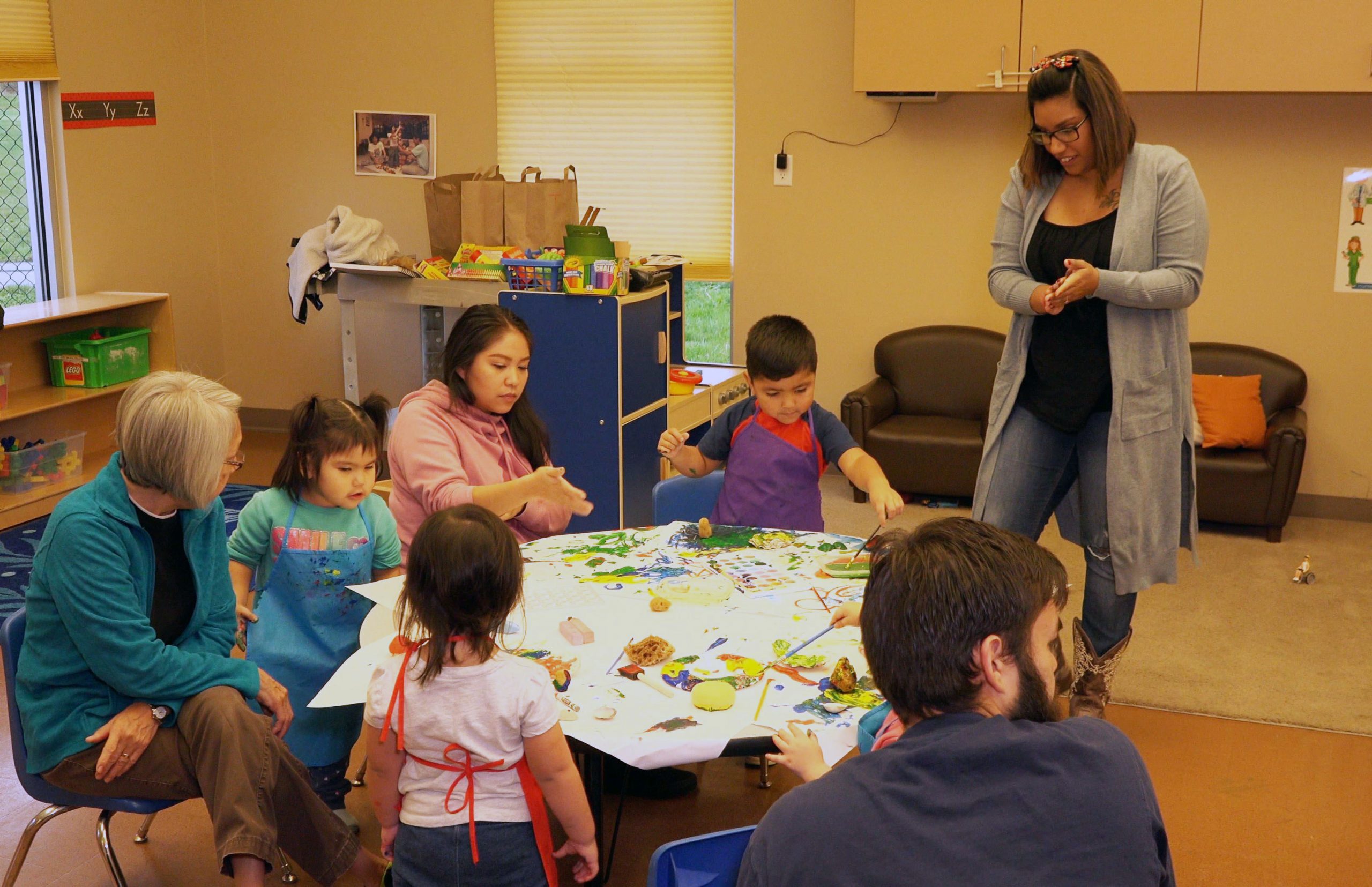By Christine Edwards, Teacher, Northwest Indian College
In early November, the Salish Sea Research Center team from Northwest Indian College visited our Early Learning Center classrooms. Our students were excited to see what they had brought because the scientists arrived with a mysterious, big, red ice chest. The children called it “a treasure chest of sea creatures!”
The older children learned more about these creatures as they painted oyster and clam shells. The toddlers were more interested in trying to put creatures in their mouth because young children make sense of the world around them through taste.
It was such a sight for the children and teachers alike to see what was in the red ice chest.
The first creature they met was a sea urchin. The children were startled by it at first, but then there was the excitement of being able to touch it using gentle hands. They got to see how the sea urchin moves its legs and experience how spiny it felt.
Next, they met a sand dollar. One child asked what they could buy with it, because of its name! The scientists explained it does not have a value to people but is of great value to the sea.
My favorite part was seeing how the children squealed when they met the crab. One child was initially scared. He stayed near his mom’s side until she reassured him. He then opened up, took a risk, touched the crab, and got to watch it walk sideways on the table.
The research team got the children’s undivided attention by bringing the live sea creatures to meet them and by letting them paint seashells. This exercise was a great way to get youngsters involved with STEM education and the expressions of joy on the children’s faces was priceless.

Elders asking children critical thinking questions, enhancing their engagement in Indigenous STEM education.
The children were so delighted they talked about the experience long after the team had left. One child said, “Did you see me touch the crab? I was not scared anymore!”
The children’s reactions show the importance of holistic learning activities. Young kids engage in cognitive development by learning about sea creatures; physical development by touching the creatures and describing the textures; and social/emotional development by conquering their fears.









